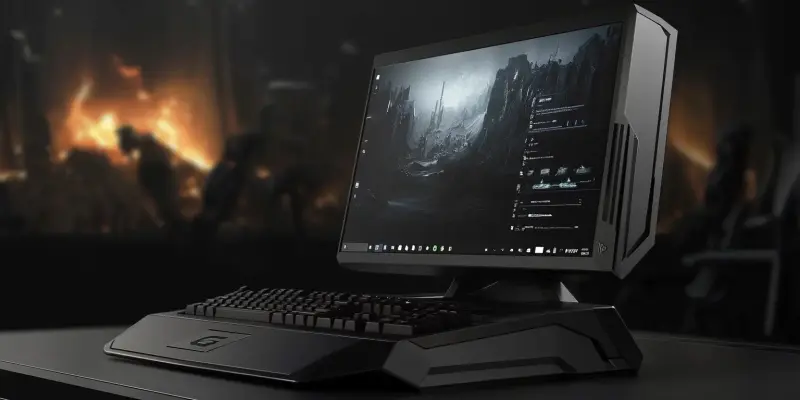In a tech landscape dominated by Intel and AMD, the arrival of Qualcomm’s forthcoming 2nd-generation Snapdragon X Elite processor could signal a monumental shift in the desktop PC market. Initially known for its prowess in mobile chipsets, Qualcomm is making a bold move with its new processor, codenamed Project Glymur. Early tests using a 120 mm liquid cooling AIO system bring to light Qualcomm’s intention to stake a claim in a segment traditionally ruled by well-established players. The pivotal question arises: Can Qualcomm’s new Snapdragon X Elite compete with the giants Intel and AMD, particularly in areas of gaming and productivity?
Qualcomm’s Aim at the Desktop Segment
Reliable leaker Roland Quandt has stirred considerable excitement by suggesting that Qualcomm’s second-generation processor might come equipped with Oryon V3 cores. This speculation is rooted in comments made by Qualcomm CEO Cristiano Amon about the advancements in their next-gen CPUs. If these claims hold true, the introduction of the Snapdragon X Elite at the prestigious CES 2025 could represent a seismic event for desktop computing technology. CES, renowned for unveiling groundbreaking tech innovations, seems an aptly chosen stage for Qualcomm to demonstrate its capability in counterbalancing the duopoly of Intel and AMD.
Currently, Qualcomm’s presence in the desktop market is virtually non-existent, focusing primarily on lightweight laptops such as the Lenovo Yoga 7x Slim. These devices, lacking discrete GPUs, have clearly not targeted hardcore gamers. However, pairing a desktop PC equipped with a discrete GPU with the new Snapdragon chip could substantially shift this narrative. Such a move could make gaming accessible to a wider audience, particularly budget-conscious gamers who currently depend on more affordable alternatives. The potential does not just stop at gaming but could broadly impact overall productivity, offering new avenues for enhanced user experiences.
Market Response and Compatibility Issues
Despite the initial excitement surrounding Qualcomm’s entry, market reception has had a tempered response. Snapdragon X Elite laptops have sold only around 720,000 units since their launch, amounting to less than 1% of the total PCs shipped in Q3. These figures underscore the challenges Qualcomm faces in a competitive landscape where brand loyalty and established reputation immensely influence consumer choice. One noticeable hurdle is the hardware compatibility issue; prospective users may need new motherboards, posing an additional cost which could deter potential buyers.
Nonetheless, these numbers don’t necessarily spell doom for Qualcomm. It’s common for new entrants in well-established markets to experience a slow start as the adoption curve progresses. Much of the cautious optimism stems from the recognition that Qualcomm needs to prove its longevity and performance against two titans with decades of accrued consumer trust. The true test may come through extended real-world performance evaluations post-launch and subsequent user feedback, which will essentially shape Qualcomm’s journey in the desktop segment.
Looking Ahead to CES 2025
In a tech landscape dominated by Intel and AMD, Qualcomm’s upcoming 2nd-generation Snapdragon X Elite processor could herald a significant shift in the desktop PC market. While Qualcomm is primarily known for its expertise in mobile chipsets, the tech giant is now making an ambitious leap into desktop computing with its new processor, codenamed Project Glymur. Preliminary tests using a 120 mm liquid cooling AIO system underscore Qualcomm’s intent to compete aggressively in a market long controlled by established players.
This bold move raises an essential question: Can Qualcomm’s new Snapdragon X Elite genuinely rival the juggernauts Intel and AMD, particularly in terms of gaming and productivity performance? The Snapdragon X Elite aims to challenge the status quo by offering not only powerful performance but also energy efficiency—a common strength found in Qualcomm’s mobile processors. If successful, Qualcomm could diversify the market, giving consumers more choices and possibly driving further innovation in how desktop CPUs are designed and utilized. The tech world eagerly awaits to see if Snapdragon X Elite can indeed stand up to the significant might of Intel and AMD.

